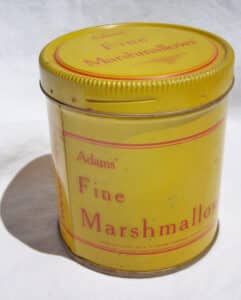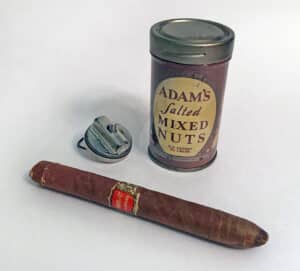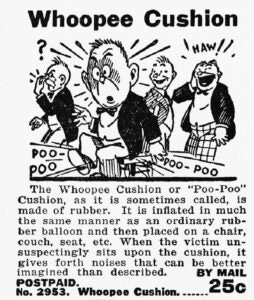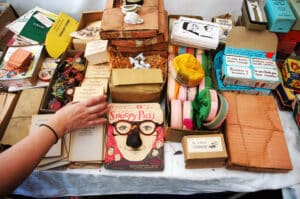by Jessica Kosinski

aka “snake in a can”
Giving gifts is always fun, but there’s a special kind of gift that can sometimes be extra fun – a gag gift. Gag gifts are extremely popular. In fact, certain types of gag gifts are so popular that they are part of our common culture. Others are more specific to the situations or people involved. Let’s take a more in-depth peek at gag gifts.
Popular Gag Gifts
A gag gift has a meaning that is both specific and non-specific at the same time. Specifically, the phrase “gag gift” generally refers to an item used or given by one person or group of people to pull off a practical joke on another person or group.
However, the non-specific aspect comes in because everyone has a different sense of humor. A gag gift that might work for one person or in one specific situation may be completely inappropriate under other circumstances. Almost anything can be a gag gift under the right circumstances. However, certain items are widely accepted as common gag gifts. Some of those items have been popular for years and include:
• Joy Buzzers/Hand Buzzers
• Whoopee Cushions
• Rubber Chickens
• Snakes in a Can
Despite those standouts, popular gag gifts change over time, not just according to the situation. For example, gag gifts popular today are not the same as those that were popular back in the 1950s and 1960s. Some of that is due to how the term “gag gift” has changed in meaning over the years.
Changing Eras and Changing Gag Gifts

Until about 1980, a gag gift was typically less of a gift and more of a prop. Typically, a gag gift was used as part of a practical joke, such as making someone jump when they grabbed a hand buzzer. From 1980 to the present day, gag gifts have also included any gifts designed to make the recipients smile or laugh. Examples include t-shirts, signs, coffee cups, or just about anything with a silly saying.
Gag Gifts of the 1950s through 1980s
The 1950s and 1960s were an especially interesting period in the history of the use of gag gifts here in the United States. Many of the gag gifts of that time were quite risqué for the time. For example, one popular gag gift of that time was a box containing false teeth with the saying “falsies for that glamour look!” and an image of a well-endowed woman on the cover. Other gag gifts of the period were less risqué but could often cause minor harm to those on the receiving end. For example, there were trick matches designed to “go bang” when lit.
As time progressed into the 1970s and 1980s people became much more difficult to pull pranks on. Sensitivity and litigious behavior increased. Therefore, pranksters were reluctant to use any items that could cause physical discomforts, such as itching powder or joy buzzers. Instead, many gag gifts that came in boxes with sayings on them hinting at what may be inside, but with a funny spin. For example, one box said “how to succeed in business” and contained a gold-colored screw.
Classic Gag Gift Origins

It might surprise you to know that some classic gag gifts go quite far back. For example, versions of a whoopee cushion have been used as far back as the time of the ancient Romans. In particular, a young emperor named Antoninus who ruled from 218 to 222 used to use versions of them to annoy guests who got on his nerves. A 10th-century Arabian emir also used versions of whoopee cushions made out of animal bladders to prank his guests. However, the actual whoopee cushion brand we know today originated in the 1930s in Canada. It was produced originally by the JEM company beginning in 1930 but was not named “whoopee cushion” until 1932. Before that, it went by “poo-poo cushion” and other names.
Another classic gag gift is the joy buzzer/hand buzzer. Oddly, it is called a gift, but it does not usually change hands. Generally, the original purchaser simply wears it and shakes the hand of someone else with it on. That second person then receives the “gift” of a mild buzzing or vibrating sensation on his or her hand. One of the earliest versions of it was called “The Zapper.”
It actually hurt when used on someone. Soren Sorensen Adams noted that in the 1920s, then decided to try to improve upon that design. His “Joy Buzzer” was produced through his company, S.S. Adams Co. Production started in 1932 after the process of creating and patenting a prototype began in 1928.
Collecting Vintage and Antique Gag Gifts

Since gag gifts of today are quite unlike those of years gone by, collecting and preserving vintage and antique gag gifts can be a lot of fun. You can show them off at parties or use them to prank your friends. When looking for gag gifts made in the United States from approximately 1950 onward, you can find them almost anywhere. Online shopping, frequenting antiques and novelty shops, and visiting flea markets can be great ways to start. If you are looking for gag gifts made in other parts of the world, online shopping is probably your best bet. You may stumble across such gag gifts in shops here in the U.S. Searching for them lets you enjoy the thrill of the hunt and the thrill of the gag.
Jessica Kosinski has been a freelance writer specializing in writing short articles for 15 years. She is also an avid collector of both antique books and Star Wars memorabilia. Although she is not in the antiques industry professionally, she has learned a lot about antiques over the years by periodically helping out at her mom’s antiques shop in Greenville, NH. She currently balances maintaining the antiques shop’s Facebook page, www.facebook.com/MallofNE, and working on various freelance writing assignments. She can be reached at dementorskiss77@yahoo.com.





Related posts: